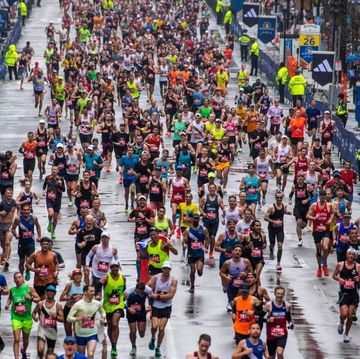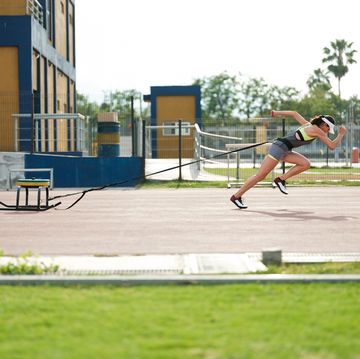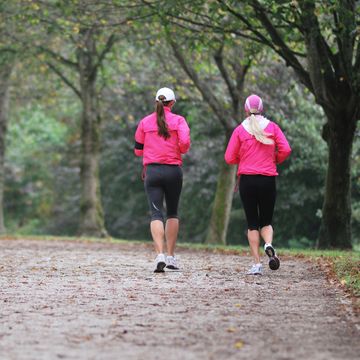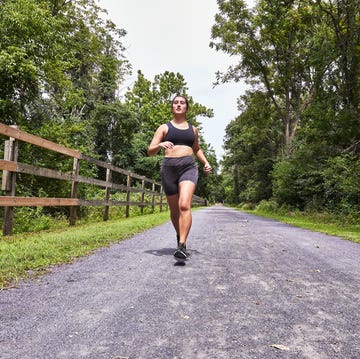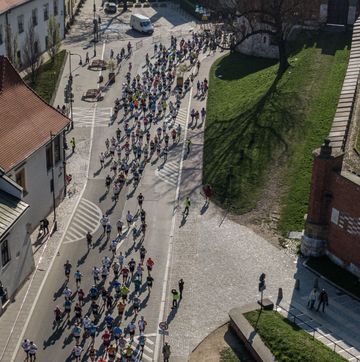What if I told you that running well is all in your head?
You probably wouldn't believe me. You might point out that you can't think your way to a good marathon on poor training. Or command your legs to run faster when the bear jumps on your back. Or wish yourself a perfect ectomorphic running body like the world's best distance runners.
And you'd be right. But you'd also be missing the point.
It's not that good physical training isn't essential to running. It's that your brain ultimately determines how much of that training you'll be allowed to use. It does this by monitoring your body's fuel levels, temperature, hydration and other markers of fatigue and tissue damage, and then shutting down muscle fiber recruitment and other systems when it perceives imminent damage to your body.
Recently I began coaching Diana, a runner who'd clocked 23:09 for 5K. After three months of training, she entered another 5K. I cautioned her to expect resistance from her brain, that her brain--like her body--needed to be trained to endure a faster, sustained effort. She ran 23:03 and, despite my warning, was disappointed. Two weeks later she ran 22:11. A couple of weeks after that, 21:08. Within a few months she was down to 20:22. Her fitness hadn't improved a minute in two weeks and then another minute two weeks later. Diana's brain had gradually accepted that a fast 5K wasn't going to kill her.
There are many theories of fatigue. The peripheral fatigue model, which dominated for 100 years, holds that fatigue occurs when muscles begin to fail in a way that will ultimately lead to physiological catastrophe (i.e., you'll slow down or stop). The central governor model, proposed in 1997 by Timothy Noakes, a professor of exercise and sport science and author of Lore of Running, proposes that fatigue is an emotion generated by your brain to protect your body--sensing imminent danger to your organs, your brain decreases muscle fiber recruitment. Most experienced runners favor a third model, in which a combination of the brain's subconscious regulation and our own conscious evaluation of physical and emotional fatigue dictates our pace.
But even runners who accept that the brain exerts some subconscious regulation are often unaware of the extent of that control. A 2004 study found that cyclists who rinsed their mouths with a sports drink for five seconds and then spit it out completed a 40K time trial faster than a control group. A 2009 follow-up study documented a 3 percent performance improvement. And a 2013 study using a combination carb-caffeine drink demonstrated improved sprinting ability. In all three studies, the brain altered physical performance based upon the false belief that an energy source had been ingested.
Here are five strategies to persuade your brain to ease up on the regulation:
Race-effort repetitions: These teach your brain that the effort is manageable. Make the workout challenging enough to simulate the fatigue you'll encounter during the mid-to-latter stages of the race.
"Down a quart" training: An endurance race results in depleted glycogen stores and dehydration. Leave the fuel belt at home during training runs so that your brain can acclimate to these conditions.
Extended runs: If you're having trouble increasing your mileage incrementally, add 25 to 50 percent more volume (miles or minutes) to a single, normal-distance run. You'll suffer, but you'll be amazed how much easier a mere 10 to 20 percent increase will feel the next time out.
Negative-split runs: For half marathoners and marathoners, run at least part of the second half of your long run at race effort.
Tuneup races: Use tuneup races to convince your brain that your body can handle a hard race effort.
Your brain is out to protect you. But it's not unreasonable. Your job is to show it that you're trustworthy. And then, like a proud parent handing over the keys to a responsible teenager, it will reward you with significant performance improvement.
Pete Magill is the oldest American to break 15 minutes for 5K, with a 14:45 at age 49, and co-author of the newly released book Build Your Running Body.





